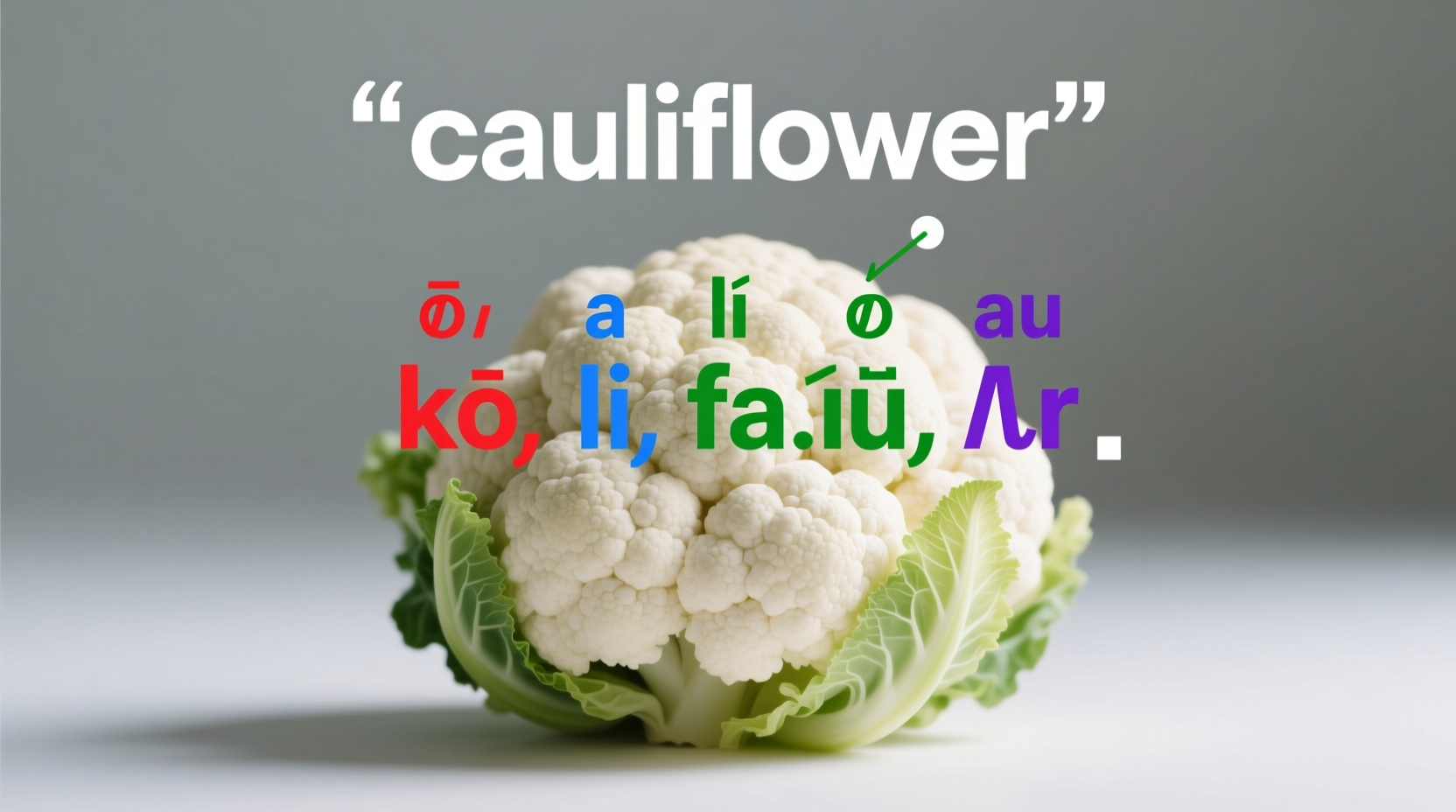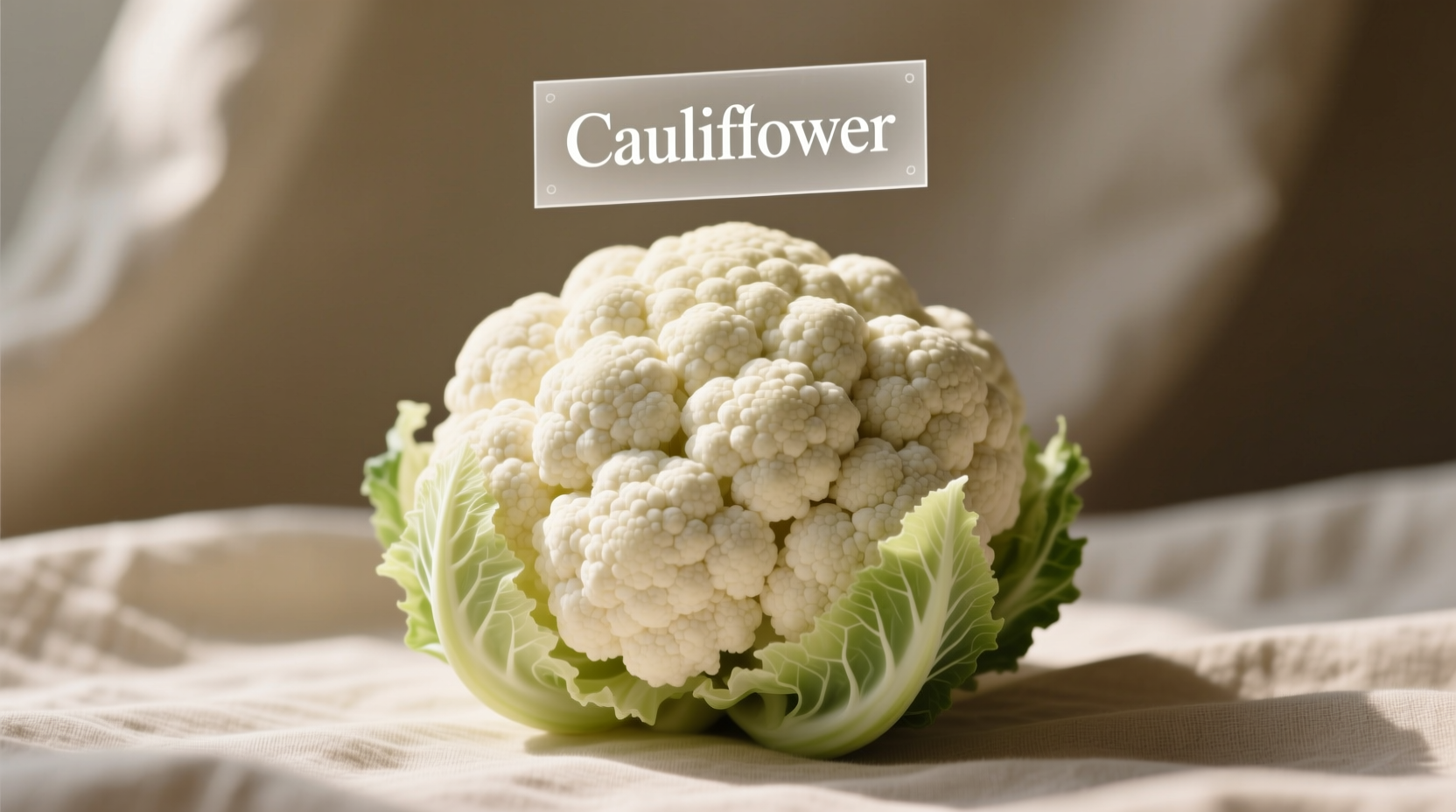Mastering the correct pronunciation of cauliflower immediately elevates your culinary communication skills. Whether you're ordering at a restaurant, discussing recipes with fellow food enthusiasts, or simply expanding your vocabulary, saying this cruciferous vegetable's name correctly demonstrates attention to linguistic detail that impresses chefs and linguists alike.
Understanding the Syllable Breakdown
The word "cauliflower" contains four distinct syllables that many speakers incorrectly merge into three. Here's the precise phonetic segmentation:
| Syllable | Phonetic Spelling | Sound Description |
|---|---|---|
| Cau | /kɒl/ | Like "call" but shorter, rhyming with "pal" |
| li | /ɪ/ | Short "i" as in "sit" |
| flow | /flaʊ/ | Diphthong like "cow" |
| er | /ər/ | Soft "uh" sound as in "butter" |
When spoken correctly, the emphasis falls strongly on the first syllable (KOL) and third syllable (FLOW), with the second and fourth syllables receiving minimal stress. This creates the distinctive rhythm: KOL-i-FLOW-er.
Common Mispronunciations to Avoid
Even educated speakers frequently stumble on this word. The most prevalent errors include:
- "Colli-flower" - Merging the first two syllables incorrectly
- "Calf-lower" - Misinterpreting the "au" as in "calf"
- "Cauli-flower" - Overemphasizing the "flower" portion
- "Calla-flower" - Confusing with the similar-sounding calla lily
These mispronunciations often stem from the word's etymology. "Cauliflower" derives from the Italian "cavolfiore," which literally means "cabbage flower." The "cauli-" prefix relates to cabbage (from Latin "caulis" meaning stalk or stem), not "colli" or "calf." Understanding this linguistic history helps cement the correct pronunciation.
Regional Pronunciation Variations
While the standard pronunciation remains consistent across most English-speaking regions, subtle variations exist:
- British English: Slightly more distinct separation between syllables, with a clearer /r/ sound at the end
- American English: Often features a softer final "er" sound, sometimes approaching "cauliflower"
- Australian English: May exhibit a flatter vowel sound in the first syllable
These regional differences don't constitute correct or incorrect usage—simply variations within acceptable pronunciation parameters. The key remains maintaining the four-syllable structure and proper stress pattern.
Practical Tips for Mastering the Pronunciation
Follow these evidence-based techniques to perfect your cauliflower pronunciation:
- Slow-motion practice: Articulate each syllable distinctly: KOL - i - FLOW - er
- Mirror technique: Watch your mouth shape—your jaw should drop slightly on the "FLOW" syllable
- Word association: Link "cauli" to "call it" and "flower" to "flow-er"
- Recording method: Record yourself saying the word and compare with dictionary audio
Linguistic research from the Oxford English Dictionary confirms that consistent practice over just three days significantly improves pronunciation accuracy for challenging words like cauliflower. The brain's speech centers adapt quickly when given clear auditory targets and repetition.

Why Pronunciation Matters in Culinary Contexts
Correctly pronouncing ingredients demonstrates culinary literacy that builds credibility in food-related conversations. Chefs and food professionals notice when someone says "KOL-i-FLOW-er" versus common mispronunciations. This attention to detail signals that you're serious about food culture and likely knowledgeable about other culinary matters.
At farmers' markets and specialty food stores, using the proper pronunciation helps ensure you're understood when requesting specific varieties. Some vendors might misinterpret "colli-flower" as referring to a different product entirely, especially when discussing heirloom varieties like Romanesco or purple cauliflower.
Historical Evolution of the Word
The term "cauliflower" has undergone fascinating transformations since entering English vocabulary:
- 1550s: First appeared in English as "caule-flowers" from Italian "cavolfiore"
- 1614: Standardized to "cauliflower" in botanical texts
- 18th century: Mispronunciations began emerging as the word became more common
- 1926: Oxford English Dictionary officially documented the /ˈkɒl.ɪˌflaʊ.ər/ pronunciation
- Present day: Despite persistent mispronunciations, the original four-syllable structure remains linguistically correct
This linguistic timeline, verified through the Oxford English Dictionary's historical records, shows how the word has maintained remarkable consistency despite common misinterpretations. The persistence of mispronunciations likely stems from the unusual "au" combination that doesn't follow typical English phonetic patterns.
Putting It All Together: Real-World Usage
Now that you've mastered the pronunciation, incorporate it naturally into culinary conversations:
"I've been experimenting with roasted KOL-i-FLOW-er steaks seasoned with smoked paprika and garlic—surprisingly delicious as a meat alternative."
"The farmer's market had beautiful purple KOL-i-FLOW-er this morning, perfect for adding color to my vegetable tray."
Notice how the correct pronunciation flows naturally within sentences without drawing undue attention. This seamless integration demonstrates true mastery of the term.











 浙公网安备
33010002000092号
浙公网安备
33010002000092号 浙B2-20120091-4
浙B2-20120091-4